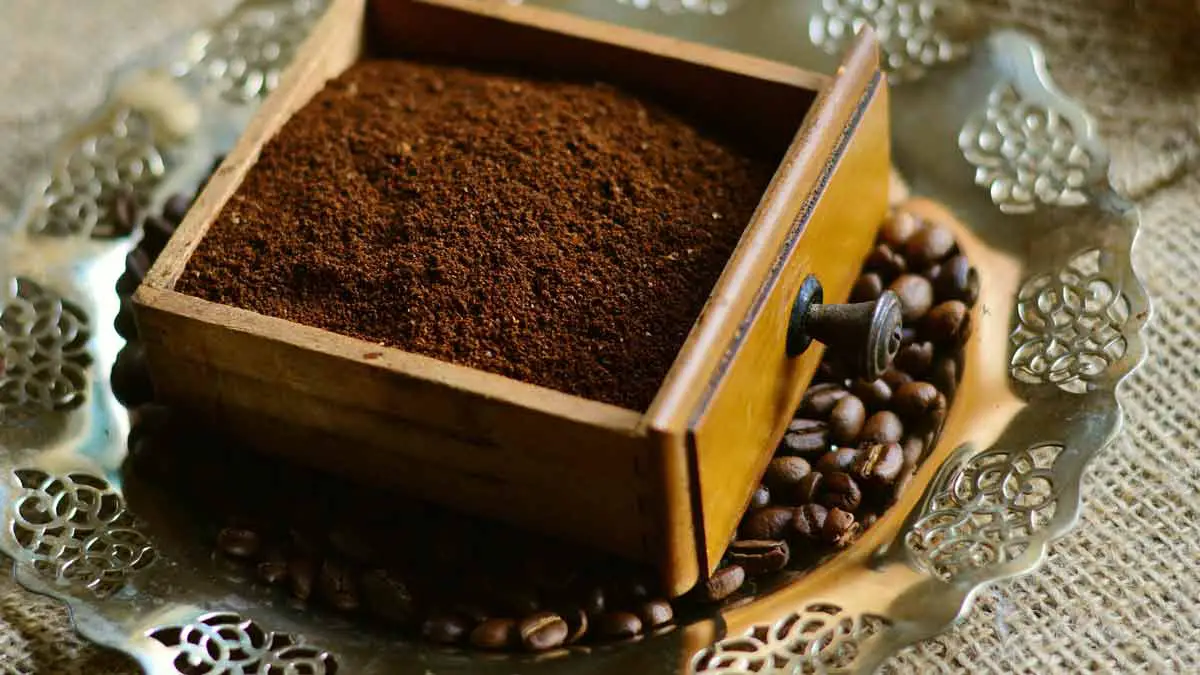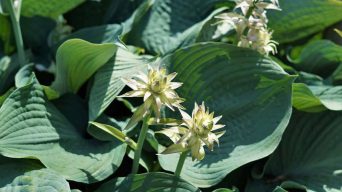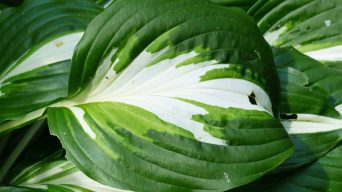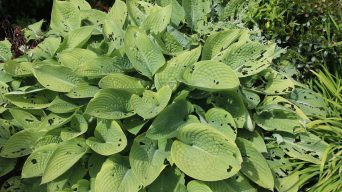Hostas are a popular garden plant loved for their striking foliage and ease of care.
Although hostas do not need much fertilization, some gardeners like to give them an extra boost with coffee grounds. But do hostas actually benefit from this addition?
Here we’ll explore all we need to know about using coffee grounds for hosta plants and how to do it safely.
Do Hostas Like Coffee Grounds?
The short answer is yes; hostas benefit from adding coffee grounds.
As a mulch or soil amendment, coffee grounds can help acidify the soil around your hosta and provide them with several essential nutrients. This includes nitrogen, phosphorus, potassium, and magnesium.
Additionally, coffee grounds can help your hosta maintain healthy soil moisture levels while improving drainage.
Coffee grounds also attract earthworms and other beneficial insects, which help aerate the soil and make it easier for hostas to absorb nutrients.
What Are the Benefits of Using Coffee Grounds for Hostas?
Some of the main benefits of adding coffee grounds to hostas include:
Improved Soil Structure and Fertility
Coffee ground use improves soil structure and fertility by adding organic matter. Organic matter acts as a fertilizer, providing nutrients for plants and improving soil structure.
Adding coffee grounds to soil improves its ability to retain water and nutrients, leading to healthier plants with better growth rates.
It also increases the level of microbial activity in the soil, which helps improve its fertility. Furthermore, it enhances the ability to aerate heavy clay soils while reducing compaction in sandy ones.
Natural Slug Deterrent
Organic gardeners love to use coffee grounds as a natural slug deterrent. Slugs do not like the smell of caffeine and avoid areas where coffee grounds have been added.
Although coffee grounds do not kill slugs, they create an unpleasant environment that makes it difficult for them to thrive.
When the coffee grounds are applied around the plants, they create a barrier that prevents slugs from reaching the hostas and eating them. This reduces the risk of slug damage to the hostas and helps them thrive without being affected by slugs.
Nutrient Source
Coffee grounds provide a variety of nutrients to the soil, including nitrogen and potassium. These two elements are essential for healthy plant growth and development. Also, coffee grounds contain small amounts of calcium, magnesium, phosphorous, and iron.
Adding coffee grounds to hostas helps them receive all these essential nutrients, leading to healthier plants and better yields.
Weed Suppression
Coffee grounds can be used to suppress weed growth around hostas naturally. The coffee grounds’ caffeine inhibits weeds’ growth, making it difficult for them to germinate and spread in the area.
Additionally, due to its heavy texture, coffee grounds prevent light from reaching the soil surface, thus inhibiting the growth of weed seeds.
How To Use Coffee Grounds on Hostas
Using coffee grounds on hostas is easy. Some steps need to be taken for the coffee grounds to be effective.
Step 1: Collect the Coffee Grounds
The best way to get coffee grounds is to save them from your own espresso machine or ask a local cafe for leftover grounds.
Ensure only to collect dry and fresh coffee grounds, as damp grounds can lead to mold growth.
Used, old coffee grounds do not provide the same benefits as fresh ones.
Step 2: Mix The Grounds With Soil
Once you have collected the coffee grounds, add them to your hosta’s soil and mix them with a shovel or trowel. Adding approximately two cups of coffee grounds for every square foot of soil will do the trick.
The grounds do not have to be spread evenly, as it is enough for them to be distributed throughout the soil.
Step 3: Water The Area
After adding and mixing the coffee grounds in with the soil, water the area thoroughly. This will help activate the nutrients in the ground and make them available to your hosta plant.
Ensure that there is enough moisture in the soil to keep it moist but not wet for best results.
Step 4: Repeat The Process
Once the coffee grounds have been added, repeat the process every few months to ensure your hostas receive adequate nutrition.
This is especially important during hot weather when the soil tends to dry out quickly and needs regular replenishment.
Step 5: Monitor Plant Growth
Finally, monitor your hostas’ growth and health to see if the coffee grounds have the desired effect.
If the plants do not respond positively or appear unhealthy, you can reduce or stop using coffee grounds altogether, as too much can do more harm than good.
Tips for Incorporating Coffee Grounds Into Your Hosta Care Routine
Here are some tips to help you incorporate coffee grounds into your hosta care routine:
The Best Time to Apply
Coffee grounds can be applied to your hosta year-round. However, applying them in the spring and fall when the plants start to grow or show signs of stress is best.
If used as a slug deterrent, coffee grounds should be applied before the slugs become active in the spring.
Apply Directly Onto the Soil
Coffee grounds should be applied directly onto the soil around the hostas but not directly onto the leaves or stems of the plant itself.
Applying coffee grounds near but not on top of hosta plants will maximize their beneficial effects while minimizing any potential adverse effects resulting from direct contact with them.
The Right Amount To Use
It is best to start with a small amount of coffee grounds and gradually increase the quantity you use as needed.
Too much can do more harm than good, so monitoring your hosta’s health and adjusting the quantity accordingly is important.
The amount of coffee grounds you use should also be determined by the type of soil in which your hostas are planted.
For instance, sandy soils need less, while clay soils require more to achieve the desired results.
Combine With Other Amendments
Coffee grounds can be used with other amendments, such as compost and mulch, to enhance their benefits.
Adding coffee grounds to your hosta care routine is a great way to give them an extra boost of nutrition while controlling slugs and weeds at the same time.
Are There Any Risks of Using Coffee Grounds on Hostas?
Although coffee grounds are generally considered safe for hostas, they can do more harm than good if not used properly.
Coffee grounds are very acidic and can burn the leaves and stems of plants if applied directly or in excessive quantities.
Therefore, it is best to use them sparingly and keep them away from the foliage of your hostas.
In addition, it is important to be mindful of where you are collecting the coffee grounds from.
You should use freshly-ground organic coffee beans that do not contain additives such as sugar or flavorings.
Using coffee grounds sourced from cafes and restaurants could pose a risk of contamination from chemicals and other substances damaging your hostas.
Considerations and Precautions
When applying coffee grounds to hostas, there are a few considerations and precautions to bear in mind.
The Potential for Caffeine Residue
Caffeine is a chemical compound found in many plants and seeds, including coffee beans.
While the amount of caffeine residue on used coffee grounds is negligible, it’s still important to remember that caffeine can be toxic to plants.
To minimize the risk of toxicity, it’s best always to use freshly brewed coffee grounds and avoid applying too much at once.
The Potential for Mold Growth
Mold can quickly become a problem in damp environments with high concentrations of organic matter, like those created by large amounts of applied coffee grounds.
To reduce the risk of mold growth, avoid applying too much coffee grounds at once and make sure to spread them out evenly.
Additionally, do not apply them directly onto wet soil, and take care when watering your hosta plant, so the soil doesn’t become overly moist or soggy.
The Nutrient Balance
Coffee grounds do contain some essential nutrients, like nitrogen and potassium, but they also have large amounts of acidic compounds.
This can disrupt the nutrient balance in a garden, leading to an unfavorable environment for hostas.
It’s best to supplement the application of coffee grounds with other organic sources of nutrients, like compost, to help maintain a healthy balance.
Final Thoughts
At the end of the day, do hostas like coffee grounds? The answer is yes! Coffee grounds can be used as a natural and effective fertilizer for hostas.
This type of fertilizer helps to promote healthy growth and discourages pests from invading gardens.
Plus, it’s an easy and affordable way to give your hosta plants the necessary nutrients. Just add a few handfuls of coffee grounds around the base of the plant, and your hostas should do just fine!







